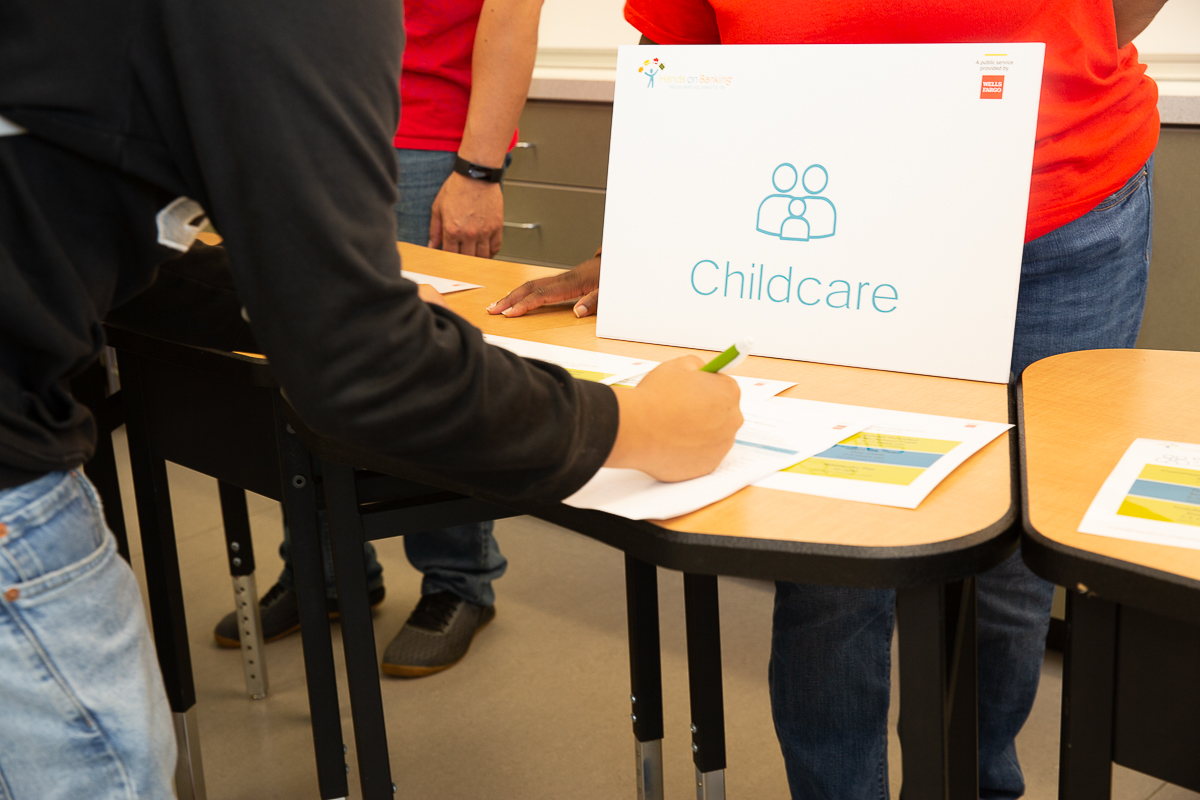The Hands on Banking® Experience is a “real-world” money management simulation, designed for high school students and young adults, that helps teach important financial education concepts such as budgeting, comparison shopping, and evaluating needs, wants, and tradeoffs in a relevant and engaging way.
Each participant is assigned a profile detailing their career, income, and family information. Then they make decisions about real-life expenses such as clothing, groceries, housing, transportation, and more – 13 topics in all.
There are three ways to play:
1. In person, where participants visit stations set up around the room
2. In person, using a slide presentation
3. Virtually, using a slide presentation
Demonstration video
Watch this video to get an overview of the Hands on Banking Experience, see it in action, and get tips for leading it. Then scroll down to find detailed instructions and materials for the activity.
Stations version (in person)
In this version, you will print the materials below and set up 13 stations around the room. Participants will travel to each station with their profile and budget worksheet.
1 – IMPLEMENTATION GUIDE
This guide gives you an overview of the activity and how it works.
2 – PROFILES WITH BUDGET WORKSHEETS
There are 50 participant profiles, describing income, career, education and family situations. Below each profile is a budget worksheet, similar to a check register, that participants use to track their spending decisions during the simulation.
3 – BUDGETING TIPS HANDOUT
The Budgeting Tips handout will help to reinforce the money management lessons taught in the game. We suggest printing this content on the back of the Profiles/Budget Worksheets to save paper.
4 – BANNERS, STATION ACTIVITY CARDS AND CHANCE CARDS
Banners: There are 13 banners to mark the different stations. You may want to enlarge the banners or you can simply tape them to the side of their applicable tables/stations.
Station Activity Cards: Participants will visit 13 stations (bank, childcare, clothing, communication, charitable contributions, entertainment, furniture, groceries, housing, insurance, personal care, eating out, and transportation) and make spending decisions based on their family situation and income. On the back of every Station Activity Card, there are instructions and tips that you can use to help students understand the station. If you have volunteers, these instructions are helpful.
Chance Cards: These cards mimic real life expenses – while there a few “good” cards, most reflect unexpected expenses with some associated cost. The cards should be given to participants at random times during the activity.
Slides version (in person or virtual)
The Hands on Banking Experience can also be delivered using a slide presentation, either in person or virtually. Use the same Profiles with Budget Worksheets and Budgeting Tips handout from above, with the following guide and PowerPoint presentation. (There is no need for banners or station activity cards. “Chance cards” are incorporated into the slides.)
In person: Participants stay seated in one place, while the instructor guides the activity using slides projected on a screen. The Virtual Experience Implementation Guide works for in-person delivery too.
Virtual: Distribute worksheets and handouts electronically, and present the slides in an online meeting.
Young adults around the country have participated in the Hands on Banking Experience. They have enjoyed the simulation and learned important financial concepts. Here are some key insights:
- 88% reported that the simulation provided them with an increased awareness of making smart financial decisions.
- 82% will consider their needs and wants before spending money.
- 76% will begin to save some of their money.
- 70% have a better understanding of how to manage their money.

